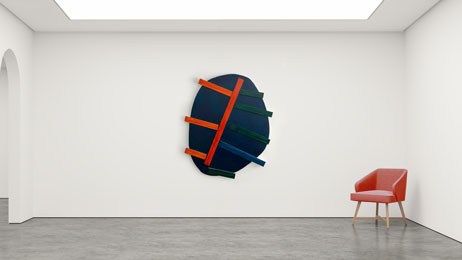Imi Knoebel ⎜ Lueb Go
Minimal art is not minimal. It can also be refined und sensual. German minimalist and Beuys student Imi Knoebel proves this time and again in his artistic work, which now spans more than five decades. The starting point for him was the question of what painting can mean after Mondrian revolutionized the art world in 1915 with his 'Black square on a white background'.
After a phase in which he worked exclusively in black-and-white and strictly geometric, Knoebel's work now shatters the boundaries of painting with its enormous variety of forms and colors. Beginning in the 1990s, Knoebel increasingly detached himself from the wall and allowed his works to project into space. In addition to plywood, monochrome colored aluminum becomes his preferred material from which he assembles his wall objects in ever new variations.
His love of geometry without symmetry is also evident in the work 'Lueb Go'. For this, he arranges eight colorful aluminum rails of different lengths along a red central axis on a blue ground vaguely reminiscent of a deciduous tree leaf. Whether the association is intentional, unfortunately, cannot be determined. But anyone who looks at the different variations of this series cannot help but think of the colorfulness of an autumn forest.


